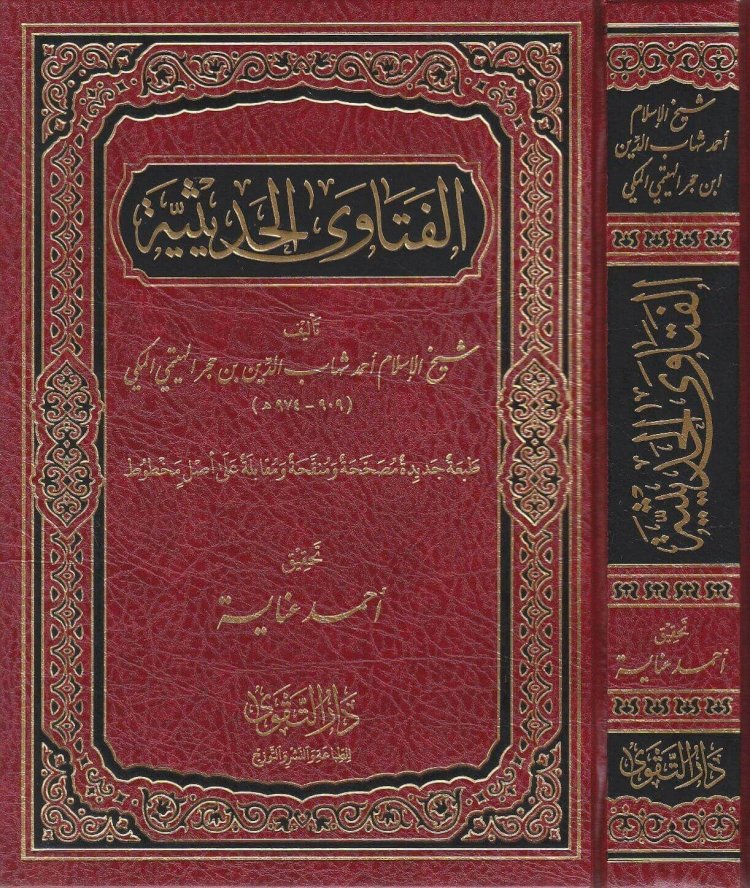Ibn Ḥajar al-Haitamī: An Architect of Integration in Islamic Intellectual Tradition
This article attempts to depict the nature of a typical Sunni scholar, taking Ibn Ḥajar al-Haitamī (909 A.H/1503 C.E-974/1566) as an example. An archetypal scholar- as labelled by Aaron Spevack- is a jurist, theologian, and mystic adhering to any established school of the three branches of Islamic intellectual history.[i] Ibn Ḥajar was a Shāfiʿī jurist, Ashʿarī theologian, and a Sufi disciple of Zakariyyā al-Anṣārī (823 A.H/1420 C.E-926/1520)), a renowned Mamluk scholar. Let me make it clear that my focus on Ibn Ḥajar here does not mean that such a synthesis did not exist among the scholars of other schools like Ḥanafī or Ḥanbalī.
This article evaluates how this synthesis got its place in Ibn Ḥajar and was conveyed to later generations after him. Such an evaluation is significant due to the impact that the synthesis had on the later Sunni tradition, especially in the Shāfiʿī jurisprudence. As is known, Ibn Ḥajar was one of the four great jurists of the post-Nawawite Shāfiʿī school; the other three being Zakariyyā al-Anṣārī, al-Khaṭīb al-Shirbīnī (d. 977/1569), and Shams al-Dīn ar-Ramlī (d. 1004/1595). The latter two also were disciples of Shaikh Zakariyyā. The entire Shāfiʿī School after them is divided between those who prioritize the legal opinions of Ibn Ḥajar and Shams al-Dīn ar-Ramlī. Ibn Ḥajar’s Tuḥfat al-Muḥtāj, a commentary of al-Nawawī’s Minhāj al-Ṭalibīn, is one of the primary references in the Shāfiʿī School, used as a textbook for the graduate-level classes at all traditional Islamic Tertiary institutions.
For instance, in Kerala, a south-Indian state following Shāfiʿī jurisprudence and prioritizing Ibn Ḥajar’s view, scholars teach Law, Theology and Mysticism. The jurisprudential chain of Shāfiʿī scholars in Kerala reaches Zainuddeen Makdhum II (d. 1583), the author of Fatḥ al-Muʿīn in Fiqh and Irshād al-ʿIbād in Tasawwuf and Theology, who migrated to Makkah to pursue his studies under Ibn Ḥajar.
Ibn Ḥajar made a remarkable reconciliation of these three disciplines through his various works, especially al-Fatāwā al-Ḥadīthiyyah and al-Taʿarruf ʿalā al-Aṣlain wa al-Taṣawwuf. For example, in al-Fatāwā, he analyses those disciplines from a Jurist’s point of view, and justifies the controversial Sufi figures, including al- Ḥallāj, al-Bisṭāmī, Ibn ʿArabi and Ibn al-Fāriḍ, while giving a jurisprudential ruling that following them is not recommended since they belonged to the group of majdhub (those who reached their level of spiritual ecstasy).[ii] Another example is the issue of who is better among ʿalim (religious scholar) and ʿarif (those who got divine illumination), to which he responded in detail without reducing the status of any. According to him, a religious scholar having the divine illumination is to be placed on top.[iii]

It should be noted that while facing such questions, he was in a dilemma of upholding the status of Fiqh and Sharīʿa without degrading the status of Tasawwuf. Fiqh urges him to give a ruling in the light of the explicit Sharia law that is to be followed by every Muslim. Meanwhile, Tasawwuf, even though defined as the strict observance of Shariah, is a subjective spiritual experience, which may lead anyone to a state that seems wrong in its outward expressions. Thus, rather than making a categorical answer, he provides separate justifications for both sides while maintaining the objective status of the Sharīʿah and restricting the adherence to Sufis in their state of ecstasy. This hypothetical approach has helped the scholars amalgamate Fiqh, Tasawwuf, Kalam, and Logic.
Interestingly, such an approach was widespread among Sunni scholars before and after Ibn Ḥajar, especially those of Ashʿarī theology. Among them were scholars, including Izz ibn ʿAbd al-Salām (1181/577-1262/660), Sirāj al-Dīn al-Urmawī (1198/594-1283/682), Shams al-Dīn al-Iṣfahānī (1276/67ʿ4-1348/749), Abū ʿAbd Allāh Muḥammad ibn Yūsuf al-Sanūsī (830-895 A.H), ʿAbd al-Wāḥid ibn ʿĀshir (1582/990-1631/1040 A.H), Zakariyyā al-Anṣārī, Abū ʿAlī al-Yūsī (1631/1040-1691/1102), Ibrāhīm al-Bājūrī (1276/1860) and Shaikh Muḥammad Amīn al-Kurdī (d. 1322 A.H), who belonged either to Shāfiʿī or Mālikī schools in their jurisprudential views.
This synthesis must be understood in a wider spectrum of the Ashʿarite theology, especially in the post-Ghazalian approach towards philosophy, which also had a long journey starting from hostility, followed by a gradual symbiosis between theology and Usul al-Fiqh. I believe that the blend seen in the works of Ibn Ḥajar is the product of this gradual development. In the initial stages, theologians were not considered religious scholars. This atmosphere changed with the works of Ashʿarite theologians in Ilm al-Kalam, Fiqh, and Usul al-Fiqh. The illustrious Ashʿarīte doctors like al-Bāqillānī (d. 1013/402), al-Baghdādī (d. 1037/423), al-Juwainī (d. 1085/478), Abū Isḥāq al-Shīrāzī (d. 1083/476), al-Ghazālī, etc. were equally competent in those three disciplines.
The post-Ghazalian Ashʿarites went further and integrated philosophy into the circle, as seen in the terminological works written in various periods. In the earlier centuries, there were books exclusively written in philosophy, such as the those of non-Ashʿarites like al-Kindī, al-Fārābī, and Ibn Sīnā. Simultaneously, scholars like Abū Ḥātim al-Rāzī and Sharīf al-Murtaḍā authored exclusively for theology, while Ibn Fūrak from the Ashʿarite School wrote al-Ḥudūd to introduce the terminologies of both Usul al-Fiqh and Ilm al-Kalam. Two centuries later, another Ashʿarite al-Āmidī incorporated philosophy and Ilm al-Kalam in al-Mubīn fī Sharḥ Maʿānī Alfāḍ al-Ḥukamā wa al-Mutakallimīn. Terminological works indicate the trend as they are usually written for students who face difficulty in dealing with new topics.
As an intellectual heir of this tradition, Ibn Ḥajar moved this tradition of integration further. Being a prominent jurist of his time, he had to address the Islamicity of many disciplines, especially Ilm al-Kalam, Tasawwuf, and Logic. Though many writings came from prominent Islamic scholars, these three disciplines were still undergoing criticism. For instance, Logic was criticized as a branch of Philosophy, which was considered a foreign science or science of the ancestors (ʿulūm al-awāʾl). At the same time, Kalam was questioned for using a philosophical method and rational thinking. Tasawwuf, on the other hand, was censured in the name of al-Ḥallāj, Ibn ʿArabī, and Ibn al-Fāriḍ. However, with a jurisprudential championship, he systematically defended the three disciplines with his already mentioned corpus, including al-Fatāwā al-Ḥadīthiyyah and al-Taʿarruf. Al-Taʿarruf is an accurate model of integration as he divided the book into three parts, Principles of Jurisprudence (Usul al-Fiqh), Theology (Usul al-Din), and Tasawwuf. Beginning with an introduction to knowledge dominated by logical discussions, he brings Theology and Tasawwuf together in the work. For instance, free will is deliberately connected with tawakkul (reliance on Allah), while topics like repentance (tawbah) are also discussed in theology. Nevertheless, while dealing with all corpora, his juristic views outweigh profound clarity and methodological soundness.
Thus, it is evident that his approach has significantly resulted in the accommodative nature, adaptability, and a mediate position in all things, the idea that traditional Islam has always promoted. A scholar with an extreme position in rationalism cannot understand the literalist’s stand. In other words, a scholar shouting against Sufism cannot really appreciate the cultural and aesthetic history of Islam. That is why the effect of the Ashʿarite integration was very influential and far-reaching among the intelligentsia.
Comprehending this approach will give an insight into the ongoing debates over whether the Sunni scholars were active and innovative, especially after the so-called close of the door of ijtihad. To my understanding, they were always innovative. There could be seen a continuous update of the disciplines to the higher levels, with a flow of incorporation among Ilm al-Kalam, Fiqh, Tasawwuf, and the rational sciences like Logic.
To be more specific, first, the traditional Islamic disciplines are pentagonally comprised of two sources, namely the Quran and Hadith, from which all instructions/rulings are derived. Then there is a methodology, i.e., Usul al-Fiqh, by which the instructions/rulings are derived, accompanied by the two derived sciences; Islamic theology dealing with the fundamentals of religion, and Jurisprudence which is the legal and practical dimensions. Precisely, if the ruling derived from the two sources is related to beliefs, then it comes under the science of Islamic theology, and if it is related to practices, then under the science of Fiqh.[iv] Then, the Arabic Language and its various sub-disciplines are considered ancillary sciences for these five.

Following al-Ghazālī, Ibn Ḥajar added logic to this list and considered it among the preliminary sciences,[v] by which logic became a mainstay of traditional Islamic curriculum at tertiary levels. Thereafter, logic was taught as an introductory tool as Ibn Ḥajar did in al-Taʿarruf. This approach that was Ghazalian in spirit, gave answers to two contradictory stands against al- Ghazālī that he caused intellectual stagnation in the Muslim world by censuring Philosophy[vi] and rationalizing Islam by incorporating logic and other branches of philosophy into Islamic disciplines.[vii] As was clear from the intellectual history of Islam, Al-Ghazālī never promoted such inertia since he has not totally negated philosophy but purified it by classifying its incumbent elements into that are inimical to Islam, acceptable, and neutral.[viii] This purified form was used by the Post-Ghazalian Ashʿarites like al-Rāzī and further popularized by Ibn Ḥajar and the likes.
Further integration of rational theology and Tasawwuf was the next level of this innovation. Ibn Ḥajar may have adopted Ḥikam (aphorisms) of Ibn Aṭāʾ Allāh al-Sakandarī (d. 709/1309) as a model for this. He discussed theology in a spiritual tone to avoid extreme rationalism and spirituality in a rational tone to make it understandable.
Regarding the Shāfiʿī school of Jurisprudence, there is an argument raised by the likes of George Makdisi that the Shāfiʿī school remained traditional in its theological approaches while the mainstream Shāfiʿites rejected the rational approaches of the Ashʿarite-Shāfiʿite theologians. .[ix] However, it is clear from the works of Ibn Ḥajar, Zakariyyā al-Anṣārī, and many other mainstream Shāfiʿites that they were not against the Ashʿarī theology. Interestingly, Shaikh Zakariyyā has written a commentary on Sharḥ al-ʿAqāʾid of the Ashʿarite scholar, al-Taftazāzānī.
To conclude, the praxis of integration promoted by scholars including Ibn Ḥajar has significantly accommodated various intellectual sects and brought them together. I believe that this integration was one of the causes of the public acceptance they enjoyed. They were sought after for religious matters as they were jurists, and trusted in their rulings being pious and trustworthy, which they attained through their spiritual practices, an important aim of Tasawwuf. Similarly, they were able to follow a mediate position based on the Ashʿarite theology, sympathizing, and creating a sound balance in dealing with various issues, including blasphemy. Hence, this approach can be moved further to developing a post-Arab spring theology where conflicts are resolved and peace is rebuilt.
Mohammed Suhail EM al-Hudawi is a PhD scholar, Dept. of Philosophy, at the University of Hyderabad. He can be contacted suhailems@gmail.com
[i] Aaron Spevack, The Archetypal Sunni Scholar: Law, Theology and Mysticism in the Synthesis of al-Bajuri, Unpublished PhD Thesis (Boston: Boston University, 2003).
[ii] Ahmad Shihab al-Din ibn Ḥajar al-Haitami, al-Fatawa al-Hadithiyyah (Beirut: Dar al-Ma’rifah, n.d), 313-314.
[iii] Ibn Ḥajar, al-Fatawa al-Hadithiyyah, 309.
[iv] Hasan Mahmud al-Shafii, al-Madkhal ila Dirasat Ilm al-Kalam (Karachi: Idarat al-Quran wa al-Ulum al-Islamiyyah, 2001, 2nd ED.)198-199.
[v] Khaled El-Rouyaheb, “Sunni Muslim scholarship on the status of logic, 1500-1800”, Islamic Law and Society, Vol. 11, No. 2 (2004), 217.
[vi] Parvez Hoodhboy has raised this view in his ISLAM AND SCIENCE: RELIGIOUS ORTHODOXY AND BATTLE FOR RATIONALITY (London: Zed Books Ltd., 1991).
[vii] This argument comes from the Neo-Hanbalites who rejects rational engagement in theology.
[viii] Abu Hamid Muhammad ibn Muhammad al-Ghazali, al-Munqidh min al-Dalal, ed. Jameel Saliba and Kamil Iyad (Beirut: Dar al-Andalus, 1967).
[ix] George Makdisi, Ashari and the Asharites in Islamic Religious History, Studia Islamica, No. 17 (1962), pp. 37-80.
Disclaimer
The views expressed in this article are the author’s own and do not necessarily mirror Islamonweb’s editorial stance.
























Leave A Comment